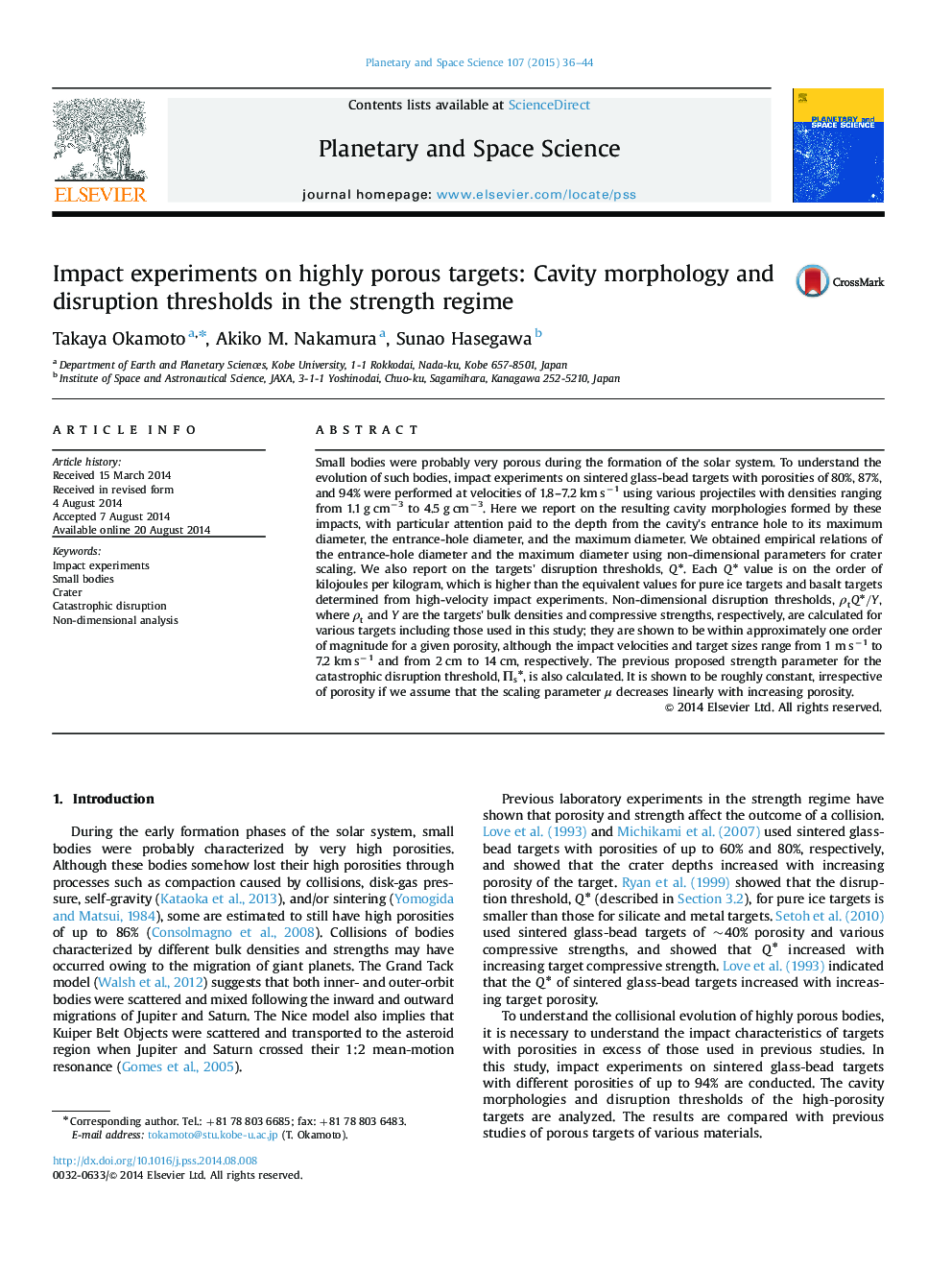| Article ID | Journal | Published Year | Pages | File Type |
|---|---|---|---|---|
| 1781004 | Planetary and Space Science | 2015 | 9 Pages |
•Impact experiments on targets with porosity of 80%, 87% and 94% were conducted.•Empirical relations of cavity dimensions are obtained.•Disruption thresholds are compiled using non-dimensional parameters.
Small bodies were probably very porous during the formation of the solar system. To understand the evolution of such bodies, impact experiments on sintered glass-bead targets with porosities of 80%, 87%, and 94% were performed at velocities of 1.8–7.2 km s−1 using various projectiles with densities ranging from 1.1 g cm−3 to 4.5 g cm−3. Here we report on the resulting cavity morphologies formed by these impacts, with particular attention paid to the depth from the cavity׳s entrance hole to its maximum diameter, the entrance-hole diameter, and the maximum diameter. We obtained empirical relations of the entrance-hole diameter and the maximum diameter using non-dimensional parameters for crater scaling. We also report on the targets׳ disruption thresholds, Q⁎Q⁎. Each Q⁎Q⁎ value is on the order of kilojoules per kilogram, which is higher than the equivalent values for pure ice targets and basalt targets determined from high-velocity impact experiments. Non-dimensional disruption thresholds, ρtQ⁎/YρtQ⁎/Y, where ρtρt and YY are the targets׳ bulk densities and compressive strengths, respectively, are calculated for various targets including those used in this study; they are shown to be within approximately one order of magnitude for a given porosity, although the impact velocities and target sizes range from 1 m s−1 to 7.2 km s−1 and from 2 cm to 14 cm, respectively. The previous proposed strength parameter for the catastrophic disruption threshold, Πs⁎Πs⁎, is also calculated. It is shown to be roughly constant, irrespective of porosity if we assume that the scaling parameter μμ decreases linearly with increasing porosity.
